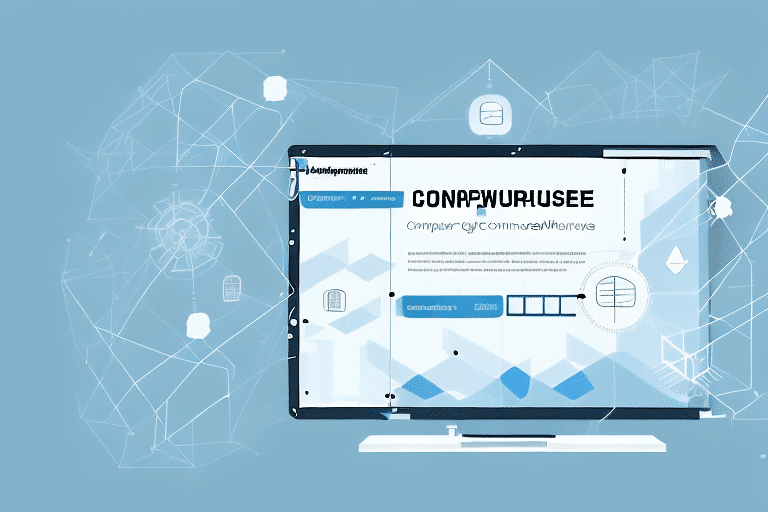How to Connect, Optimize, and Manage DHL eCommerce for Manhattan Associates WMS
As businesses become more reliant on e-commerce channels, the need to integrate various systems becomes increasingly important. Integrating DHL eCommerce with Manhattan Associates WMS can provide a comprehensive solution, but it requires careful planning and execution. In this article, we will discuss everything you need to know to successfully connect, optimize, and manage DHL eCommerce for Manhattan Associates WMS.
Overview of DHL eCommerce and Manhattan Associates WMS Integration
DHL eCommerce provides end-to-end solutions for e-commerce businesses, including warehousing, logistics, and delivery. Manhattan Associates WMS is a warehouse management system designed to optimize the storage and movement of goods within a warehouse. By integrating these two systems, businesses can streamline their e-commerce processes, from order fulfillment to delivery.
One of the key benefits of integrating DHL eCommerce and Manhattan Associates WMS is improved inventory management. With real-time visibility into inventory levels and movement, businesses can better manage their stock and avoid stockouts or overstocking. This integration also enables businesses to track and manage orders more efficiently, reducing the risk of errors and delays in the fulfillment process. Overall, the integration of DHL eCommerce and Manhattan Associates WMS can help businesses improve their operational efficiency and provide a better customer experience.
Benefits of Integrating DHL eCommerce and Manhattan Associates WMS
The benefits of integrating DHL eCommerce with Manhattan Associates WMS are numerous. Businesses can expect enhanced visibility and control over their e-commerce operations, improved accuracy and efficiency in order fulfillment, increased speed of delivery, and overall cost savings. By combining the strengths of both systems, businesses can create a seamless and efficient supply chain process.
In addition to the benefits mentioned above, integrating DHL eCommerce and Manhattan Associates WMS can also provide businesses with real-time tracking and monitoring of their shipments. This allows for better communication with customers and the ability to quickly address any issues that may arise during the delivery process. Furthermore, the integration can help businesses streamline their inventory management, reducing the risk of stockouts and overstocking. Overall, the integration of these two systems can greatly improve the efficiency and effectiveness of e-commerce operations.
Preparing for Integration: Necessary Data and Requirements
Before integrating DHL eCommerce with Manhattan Associates WMS, certain data and requirements must be in place. First, it is important to identify the specific needs and goals of your business. This will help determine which features and functions of each system to prioritize in the integration process.
Second, it is important to ensure that the necessary data is available for integration. This includes customer and product data, inventory levels, and shipping information. Finally, it is important to assess the technical requirements of the integration process and ensure that all systems are compatible and properly configured.
Third, it is important to establish a clear timeline for the integration process. This will help ensure that all necessary steps are completed in a timely manner and that any potential issues are addressed promptly. It is also important to communicate this timeline to all relevant stakeholders, including IT teams, warehouse staff, and customer service representatives.
Fourth, it is important to establish a plan for ongoing maintenance and support of the integrated systems. This may include regular system updates, troubleshooting, and training for staff members. By establishing a clear plan for ongoing support, you can ensure that the integration remains effective and efficient over time.
Step-by-Step Guide to Connecting DHL eCommerce with Manhattan Associates WMS
The integration process itself can be broken down into several steps. The first step is to establish a connection between DHL eCommerce and Manhattan Associates WMS. This can be done through an API integration or through file sharing.
Next, the systems must be configured to communicate with each other. This involves mapping the data fields between the two systems and ensuring that the data is accurately transferred from one system to the other.
Once the systems are connected and configured, testing and validation are critical to ensure that the integration is working properly. This involves testing various scenarios, such as order processing and inventory management, to verify that the integration is functioning as intended.
It is important to note that during the integration process, it is essential to have a dedicated team of experts who can oversee the entire process. This team should include individuals who are knowledgeable about both DHL eCommerce and Manhattan Associates WMS, as well as those who have experience with API integrations and file sharing. Having a dedicated team can help ensure that the integration is completed efficiently and effectively, minimizing any potential disruptions to your business operations.
Best Practices for Optimizing DHL eCommerce-Manhattan Associates WMS Integration
To optimize the integration between DHL eCommerce and Manhattan Associates WMS, businesses should consider implementing the following best practices:
- Maintain accurate and up-to-date data to ensure that order fulfillment and shipping processes run smoothly.
- Monitor inventory levels, sales trends, and other metrics to identify areas for improvement and optimize operations.
- Implement automation wherever possible, such as through automated order fulfillment and shipping processes, to increase efficiency and reduce errors.
- Continuously test and refine the integration to ensure that it is meeting the needs of the business and providing the expected benefits.
Another best practice for optimizing the integration between DHL eCommerce and Manhattan Associates WMS is to establish clear communication channels between the two systems. This can be achieved by setting up automated notifications and alerts to keep both systems informed of any changes or updates. Additionally, businesses should ensure that their IT teams are trained to troubleshoot any issues that may arise during the integration process.
Finally, it is important for businesses to regularly review and update their integration strategy to ensure that it is aligned with their overall business goals. This may involve revisiting the initial integration plan and making adjustments based on new data or changing business needs. By regularly reviewing and refining their integration strategy, businesses can ensure that they are maximizing the benefits of the DHL eCommerce-Manhattan Associates WMS integration.
Common Challenges When Managing DHL eCommerce-Manhattan Associates WMS Integration
Despite the many benefits of integrating DHL eCommerce and Manhattan Associates WMS, there are also common challenges that businesses may face. These include data inconsistencies, technical issues, and difficulty in maintaining the integration over time.
To address these challenges, businesses should be proactive in identifying and resolving issues as they arise. This may involve implementing additional data validation measures, regularly monitoring systems, and ensuring that all stakeholders are trained on the integration process.
Another challenge that businesses may face when managing DHL eCommerce-Manhattan Associates WMS integration is the need for customization. Every business has unique requirements and workflows, and the integration may need to be customized to meet these needs. This can be time-consuming and may require additional resources.
Furthermore, businesses may also face challenges in terms of scalability. As the business grows and expands, the integration may need to be modified to accommodate the increased volume of orders and shipments. This requires careful planning and execution to ensure that the integration remains efficient and effective.
Tips for Effective Management of the Integrated System
Effective management of the integrated DHL eCommerce-Manhattan Associates WMS system is key to maximizing its benefits. To ensure that the system is well-maintained and performing optimally, businesses should consider the following tips:
- Assign a dedicated team or individual to oversee the integration and ensure that it is meeting the needs of the business.
- Regularly review and monitor system performance to identify areas for improvement and optimization.
- Ensure that all stakeholders are trained on the integrated system and aware of its functions and capabilities.
- Maintain open communication with DHL eCommerce and Manhattan Associates WMS support teams to address any issues that may arise.
Additionally, businesses should consider implementing automated alerts and notifications to proactively identify and address any potential issues before they become major problems. This can help to minimize downtime and ensure that the system is always running smoothly.
Another important aspect of effective management of the integrated system is to regularly review and update the system's security protocols. This includes implementing strong passwords, regularly changing passwords, and limiting access to sensitive information to only those who need it. By prioritizing security, businesses can protect their data and prevent unauthorized access to the system.
Enhancing Customer Experience through Integration of DHL eCommerce-Manhattan Associates WMS
The integration of DHL eCommerce and Manhattan Associates WMS can have a significant impact on the customer experience. By streamlining the supply chain process, businesses can reduce delivery times and improve order accuracy, leading to higher customer satisfaction and repeat business.
Additionally, by leveraging data insights and automation, businesses can implement personalized marketing and pricing strategies, further enhancing the customer experience and driving sales growth.
Another benefit of integrating DHL eCommerce and Manhattan Associates WMS is the ability to provide real-time tracking and visibility to customers. This allows customers to track their orders from the moment they are shipped to the moment they are delivered, providing them with peace of mind and a sense of control over their delivery experience.
Furthermore, the integration of these two systems can also lead to cost savings for businesses. By optimizing inventory management and reducing shipping errors, businesses can minimize waste and reduce the need for costly expedited shipping options, ultimately improving their bottom line.
Measuring Success: Metrics to Track after Integrating DHL eCommerce-Manhattan Associates WMS
It is important to track metrics after integrating DHL eCommerce and Manhattan Associates WMS to measure the success of the integration and identify areas for further improvement. Key metrics to track include:
- Order fulfillment speed
- Inventory turnover
- Customer satisfaction levels
- Overall cost savings
By regularly reviewing these metrics and using them to inform future optimization efforts, businesses can continue to enhance their e-commerce processes and reap the benefits of the integrated system.
Future Trends in E-commerce Fulfillment and How to Stay Ahead with DHL eCommerce-Manhattan Associates WMS Integration
The e-commerce industry is constantly evolving, with new trends and technologies emerging on a regular basis. To stay ahead of the competition, businesses must remain agile and adaptable, and continuously evaluate and optimize their processes.
By leveraging the integration of DHL eCommerce and Manhattan Associates WMS, businesses can stay ahead of these trends and drive growth in the e-commerce market. From AI-powered chatbots to same-day delivery, the opportunities for innovation are endless.
Case Study: Successful Implementation of DHL eCommerce-Manhattan Associates WMS Integration
To see the benefits of integrating DHL eCommerce and Manhattan Associates WMS in action, consider the following case study:
A leading fashion retailer wanted to enhance their e-commerce operations by providing more accurate product information and faster delivery times. By integrating DHL eCommerce with Manhattan Associates WMS, the retailer was able to automate their order fulfillment and shipping processes, reducing delivery times by 50% and improving their overall customer experience.
As this case study illustrates, integrating DHL eCommerce and Manhattan Associates WMS can provide significant benefits for businesses looking to enhance their e-commerce operations. By following the steps outlined in this article and implementing best practices for optimization and management, businesses can create a seamless and efficient supply chain process and stay ahead in the competitive e-commerce market.






















